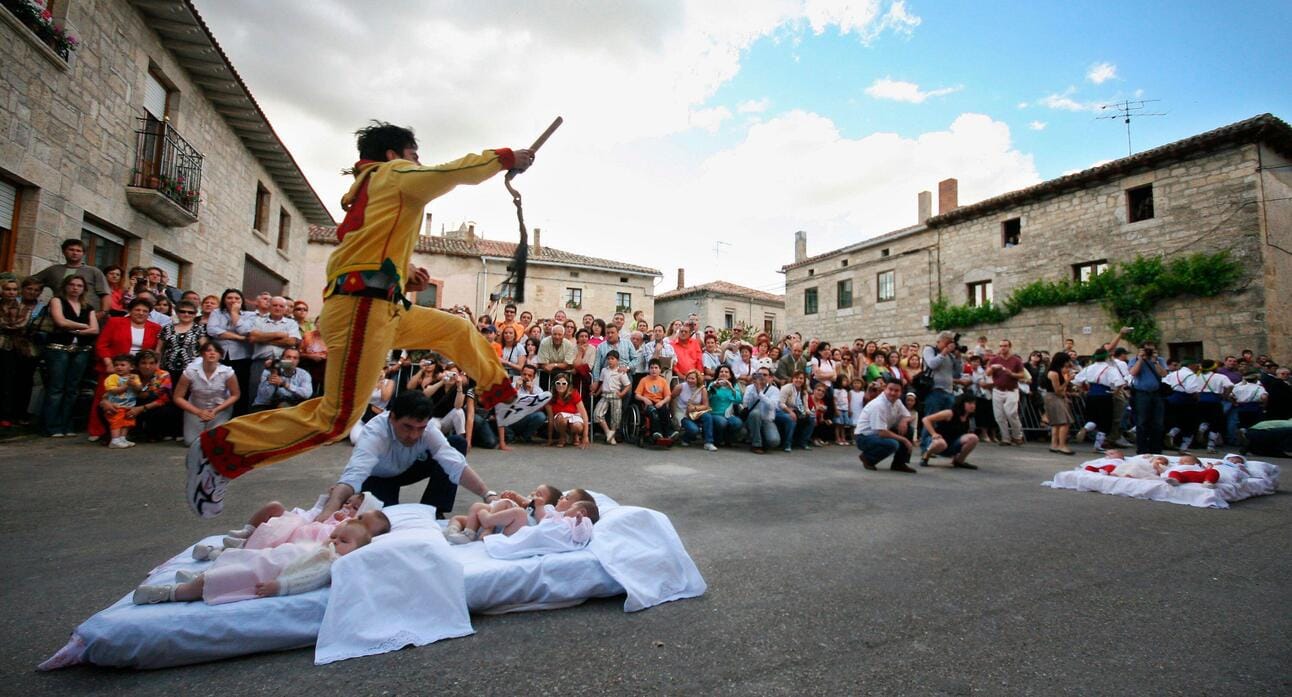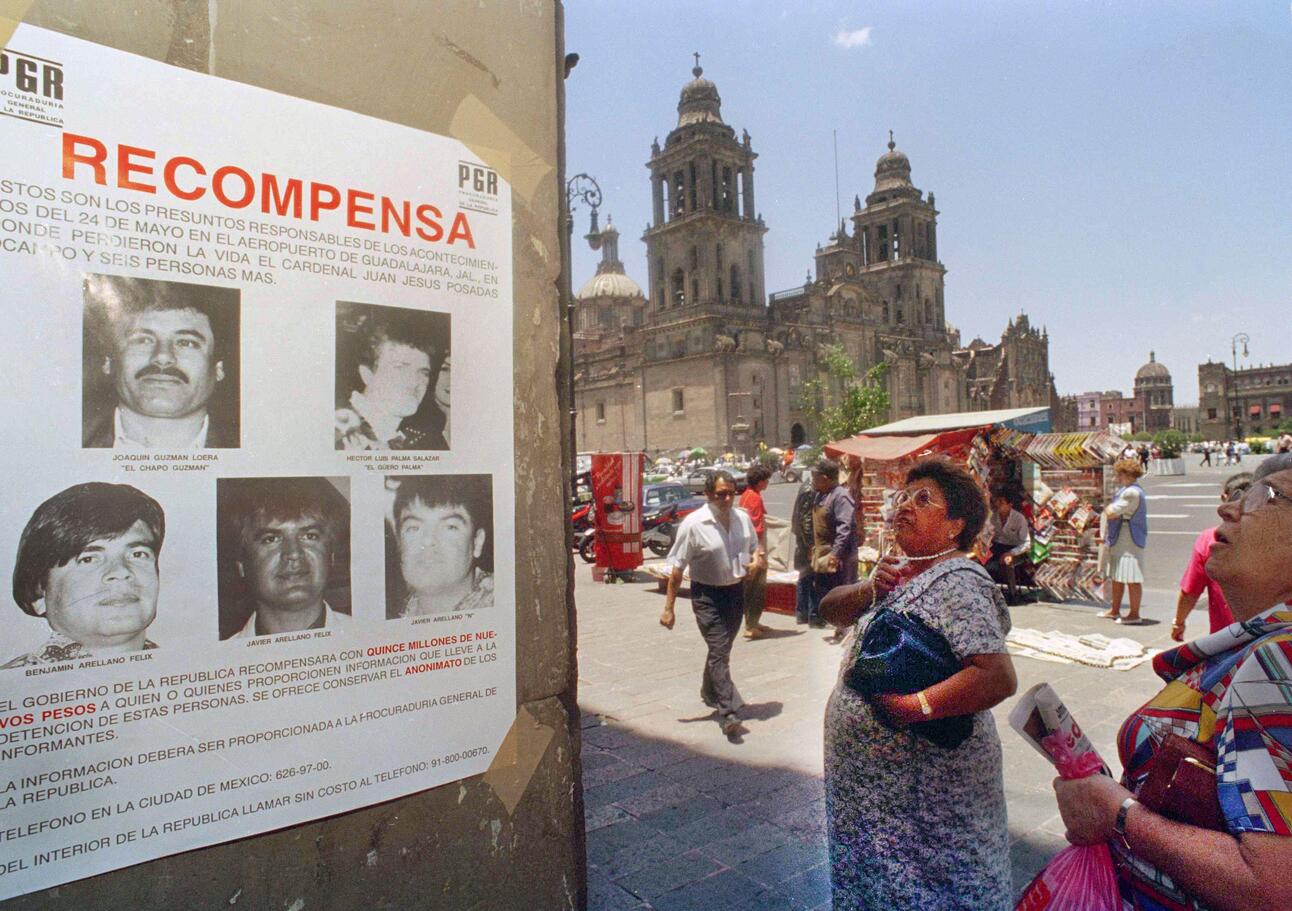- TimeGuessr Explained
- Posts
- TimeGuessr 506 Answers & Analysis
TimeGuessr 506 Answers & Analysis
Find daily TimeGuessr answers explained with historical context & photo analysis. Perfect for improving your game and understanding TimeGuessr insights for #506

¡Qué tal! This common Madrid greeting simply means ‘How’s it going?’ or ‘What’s up?’ It’s a friendly and informal way to greet someone in Spain’s capital. Based on the first photo from today’s daily game of TimeGuessr 506.
Regardless welcome to today’s edition of Daily Photo Analysis! Dive into the stories behind yesterday’s most intriguing photos from TimeGuessr #506, from Saturday, October 19, 2024.
Table of Contents
Photo 1: A man, representing the devil, jumping over babies in an annual festival called El Colacho, in celebration of the feast of Corpus Christi

Associated Press / Alamy Stock Photo
Summary of Analysis:
Signage: There is no prominent signage in the photo, but the crowd and the cultural event suggest this is a traditional festival.
Architecture and Infrastructure: The stone buildings feature small balconies and classic Spanish-style architecture, hinting at a southern European location, possibly rural Spain.
Crowd and Attire: The man leaping over babies is wearing a bright yellow and red traditional costume. The attire of the crowd is contemporary casual, likely from the late 20th or early 21st century.
Geographical Features: The street appears narrow and residential, typical of rural towns in Spain, with no major geographical landmarks visible.
General Context: The man jumping over babies is participating in El Colacho, a traditional festival held annually in Castrillo de Murcia, Spain. This event involves a symbolic “baby-jumping” to protect the children from evil spirits.
Year:
This photograph is likely from 2008.
The attire of the participants, including modern clothing like sneakers, points to the late 2000s. The crowd’s use of casual attire and the lack of smartphones in hand (which became more common in the 2010s) helps narrow down the time frame.
The costumes and the festival itself have been consistent over time, which means it’s the general attire and cultural references that assist in pinpointing this year.
Location:
The photo was likely taken in Castrillo de Murcia, Burgos, Spain.
This is the traditional baby-jumping festival called El Colacho, which is specific to this village in the province of Burgos. The architecture, attire, and specific cultural traditions all point to this location.
The combination of the man in costume, the large crowd, and the presence of babies being jumped over are all key indicators of this specific Spanish festival.
Photo 2: Children running through Zürich on New Year's Eve

Dieter Enz, Creative Commons BY-SA 4.0, via ETH Zürich Library
Summary of Analysis:
Signage: The “rivella” signs are visible, indicating the presence of this Swiss beverage brand, which suggests a large public event in Switzerland.
Architecture and Infrastructure: The building styles, wide streets, and overhead tram cables point to a mid-size European city with urban infrastructure, typical of a Swiss city like Zurich.
Crowd and Attire: The runners are wearing 1980s athletic gear, including logo shirts, tracksuits, and headbands, typical of the fashion during the late 1980s.
Geographical Features: The landscape is urban, with rows of trees and buildings lining the streets, a typical setup in Swiss cities like Zurich.
General Context: This appears to be a major running event, such as the Zurich Marathon or a similar race, which aligns with the city’s sporting traditions and large-scale crowd participation.
Year:
This photograph was taken in 1987.
The updated date matches the athletic wear and style of the runners, including headbands and tracksuits that were prominent during this time.
The overall atmosphere of the event and the prominence of brands like Rivella also reflect Swiss popular culture in the late 1980s.
The event’s scale and the absence of more modern technology confirm the late 1980s timeframe.
Location:
The photo was likely taken in Zurich, Switzerland.
The presence of Swiss-specific advertisements such as “rivella,” along with the large public race, strongly suggests Zurich.
This Swiss city is well known for hosting prominent athletic events, and the style of urban development seen in the photo aligns with Zurich’s cityscape.
Photo 3: Three workmen looking over a model walking out of French fashion designer Jacques Heim's boutique in Paris

Trinity Mirror / Mirrorpix / Alamy Stock Photo
Summary of Analysis:
Signage: The visible “HEIM Jeunes Filles” sign suggests a French establishment for young women. The name hints at an upscale location.
Architecture and Infrastructure: The building features ornate railings and scaffolding, suggesting a location in a historic European city with a mix of construction and fashion-related activity.
Crowd and Attire: The model is dressed in a formal gown typical of high fashion in the mid-20th century. The workers’ clothing appears practical for construction.
Geographical Features: The urban setting and style of the buildings suggest a well-developed European city, likely Paris.
General Context: The image likely captures a fashion shoot outside an elegant storefront, where high-end fashion meets casual workers. This juxtaposition is common in city streets, especially in Paris.
Year:
Judging by the context, the photo is from 1962.
The fashion, specifically the gown’s design and the model’s hairstyle, suggests early 1960s Paris fashion trends. The construction workers’ attire is also in line with that period.
Additionally, the store’s signage and the cultural mix of fashion and construction in public spaces point to the early ’60s, a period marked by urban development in European cities.
Location:
The photo was likely taken in Paris, France.
The elegant signage in French (“Jeunes Filles”) and the style of the storefront align with Parisian aesthetics.
This type of fashion display, combined with construction activity, is typical of busy city streets in central Paris.
The architectural style, high fashion, and cultural references are strong indicators of this location in the French capital.
Photo 4: A man leaving a coffee shop in downtown Budapest in the late 70s

Kereki Sándor, via Fortepan
Summary of Analysis:
Signage: The word “espresso” is prominently displayed, suggesting a café or coffee shop in a central European or Mediterranean city.
Architecture and Infrastructure: The glass storefront, modern signage, and reflective windows suggest a contemporary city environment with urban foot traffic.
Crowd and Attire: The man exiting the café is dressed in 1970s European fashion, including bell-bottom pants and long hair, which points to trends from that decade.
Geographical Features: The urban reflections in the glass, along with narrow city streets, suggest this is a European city, though no notable geographical features are visible.
General Context: The scene appears to show a popular espresso café in a bustling city, likely somewhere in Central Europe, where café culture is well-established.
Year:
Based on the visual clues, this photo was taken in 1975.
The man’s fashion, particularly his pants and jacket, aligns with mid-1970s styles common in urban Europe. The modernist architecture and espresso culture further confirm a date in the mid-1970s.
Additionally, the absence of more modern branding or technological elements, such as smartphones, aligns well with this time period.
Location:
The photo was likely taken in Budapest, Hungary.
The style of the café and modern architecture point to Central Europe, and Budapest, in particular, was known for its café culture during the 1970s. The style of signage and the overall urban layout suggest this Hungarian capital.
The reflective glass storefront and espresso culture are common features in Budapest, a city known for its blend of modern and classic European architecture.
Photo 5: Two women reading wanted posters for head members of the Tijuana Cartel, one of the most notorious and violent cartels in the early 90s

Associated Press / Alamy Stock Photo
Summary of Analysis:
Signage: The “PGR” and “RECOMPENSA” text on the poster indicate that this is a government-issued wanted poster in Mexico, offering a reward for the capture of notorious criminals.
Architecture and Infrastructure: The church in the background is the Mexico City Metropolitan Cathedral, with its baroque-style architecture towering over the square, a significant Mexican landmark.
Crowd and Attire: The people in the photo wear casual 1990s clothing, including light dresses and sunglasses, fitting the era when the Guadalajara airport incident occurred.
Geographical Features: The plaza setting and the distinct appearance of the Mexico City Metropolitan Cathedral solidify this as a major urban square in Mexico City.
General Context: The wanted poster features Joaquin “El Chapo” Guzman, among other criminals, and connects to major cartel activity in the early 1990s, reinforcing the time frame and location.
Year:
The photograph appears to have been shot in 1993.
The wanted poster refers to cartel figures involved in the assassination of Cardinal Juan Jesús Posadas Ocampo in Guadalajara in 1993. The fashion of the pedestrians, combined with this historical reference, strongly suggests this year.
The public display of this poster and the architectural backdrop further confirm the date as the early 1990s.
Location:
The photo was likely taken in Mexico City, Mexico.
The Mexico City Metropolitan Cathedral is visible in the background, situated in Zócalo, the central square of the city. This plaza is a historical and cultural landmark, often used for public announcements like this wanted poster.
The combination of the poster, cathedral, and surrounding architecture make this location unmistakable.
Personal Score
Thanks! Leave a comment below with either your score or any additional suggestions or insights that I have not included!
Editorial Note: This newsletter and website are not affiliated with TimeGuessr.com. TimeGuessr is a separate entity; we do not claim any ownership or direct association with the site.
Guess on!
-JonErik
Reply